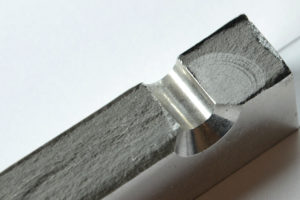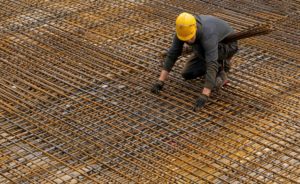Residual stress is the stress present in a material in the absence of externally applied loading. These stresses can often form during manufacturing, and are typically an unintentional byproduct of a manufacturing process. Residual stresses can be caused by a number of factors, including plastic deformations, temperature cycles, or phase transformations.
Residual stresses can positively or negatively affect a product’s performance, which makes them a vital consideration for any critical design component. Often, structures are designed with considerable safety factors, in which case the effects of residual stress can be ignored, but as we push for higher performing structures that operate closer to the cutting-edge of technology, factors like residual stress can be the difference between successful performance and structural failure.
Positive values of residual stress are referred to as tensile, meaning the material is being pulled or stretched. Unintended tensile residual stresses can cause undesirable results, including cracking and failure. If tensile stresses induced by manufacturing processes are not taken into account, these can lead to premature failure.

Negative values of residual stress are referred to as compressive, meaning the material is being pushed together. These kinds of residual stresses can improve the performance of fatigue-critical components. Surface treatment processes like shot peening and laser shock peening intentionally introduce compressive stress in select locations at the material surface to make products perform better. For instance, introducing compressive residual stress can toughen brittle materials such as glass in smartphone screens or pre-stressed concrete used in city infrastructure.

Overall, the residual stress on any given plane in a material must be in equilibrium, but there can be local regions with tensile or compressive stress. Below is our Residual Stress 101 vlog, which highlights the information above.
Residual stress engineering involves the practice of manipulating residual stresses in order to maximize the usability and lifespan of manufactured components.
Through residual stress measurement techniques, Hill Engineering is capable of quantifying the internal stresses in a material, to better inform design decisions. We are the industry leader in Contour Method measurements and provide the same level of precision and accountability in a broad range of other residual stress measurement methods.
The methods we employ are as follows:
- Contour Method
- Slitting Method
- Hole Drilling
- Ring Core
- X-ray Diffraction
- Neutron Diffraction
- Deep Hole Drilling
- Barkhausen Noise Analysis
- Biaxial Mapping
- TrueSlot
Hill Engineering is a trusted source for a wide range of measurement capabilities. For more information about residual stresses or any of the residual stress measurement techniques we employ at Hill Engineering, feel free to contact us.